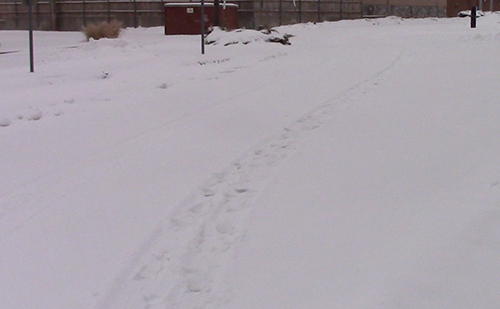Everyone’s talking about the weather in the Mid-West. “Worst winter in decades,” they say.
Which isn’t quite true. Worst winter in terms of accumulated snow and ice over the last couple of years, but long-timers will tell you that this winter looks a lot more like what it used to look like almost every winter.
What’s been interesting is the number of church closings for weather … and more to the point, who closes and who opts to stay open.
I’ve been watching the churches in the Kansas City area, where there’s been a good bit of nasty weather, and taking notice of which churches close in times of inclement weather.
It seems that most small churches close.
And most larger churches remain open.
There are those who might conclude, “That’s because small churches have mostly older members than those big churches.”
And in general, they’d be correct.
The smaller churches tend to close, they say, to protect their members from driving or walking in hazardous conditions. That seems very noble of them.
Does that mean larger churches are calloused and don’t care about their members?
I don’t think so. In fact, there’s a core value at work here that’s important not to miss.
Small churches, by and large, place their priority on their existing members.
Larger churches, again by and large, place their priority on those “members” who aren’t there yet.
Honestly, the small churches aren’t expecting visitors on almost any Sunday, and certainly not when there is a possibility of icy or snowy roads.
On the other hand, the larger churches expect visitors every Sunday … even on bad-weather days. You just never know when a spiritual crisis will drive an unchurched person out of their house and into the church seeking answers to their deepest wounds and darkest fears.
When I speak to larger church leaders and ask them about the dangers of dented fenders and broken hips because of bad weather, they’ve generally responded, “We expect our members to consider the weather, the road conditions, and their mobilization abilities to make an informed and wise decision about their attendance.” Or words to that effect. And to be fair, there’s no expectation that every member will show up every time the doors are open.
Don’t get me wrong … there are no easy answers, but it got me to thinking …
… is it possible that larger churches got that way because they almost never close for almost any reason?
… Or is there a larger issue at play here?
Got thoughts? We’d love to hear from you. Add your comment below.






Having pastored both larger and smaller churches in GA where we often faced ice storms, the leadership teams struggled with the open/close decision by considering safety risk, operational requirements, long-term impact, including impact on attitudes. The most difficult outcomes that leaders had to deal with were injuries or accidents when we stayed open and lingering negative attitudes whether we stayed open or closed
Bill,
Interesting post. I now live in an area where weather almost never plays a role in whether or not to close church (Texas). But for more than 20 years I served churches in Missouri–where some winters I never broke out a snow shovel, and others had multiple snow and ice events.
I think you’re largely right about why smaller churches tend to close and larger ones do not. Another (related) issue is the percentage of people it takes to make sure church is open. Large churches need more people to be open, but typically it’s a smaller percentage of the overall attendees. In small churches, if you’re missing one or two people (the musician, the “guy who always opens the church”, the nursery attendant), the morning becomes much more challenging. And as you say, when your motivation to be open is high because being open helps fulfill your mission in the world, you will be more flexible.
I also think churches close more readily now than they did in previous times because we have a simple, cheap and powerful tool to communicate real time information. I remember getting up early on Sunday mornings when snow was predicted and if we decided to cancel church we would put the calling tree into motion. Now, churches make a decision on Saturday afternoon or evening and put it on Facebook. The hassle of notifying people became mush easier.